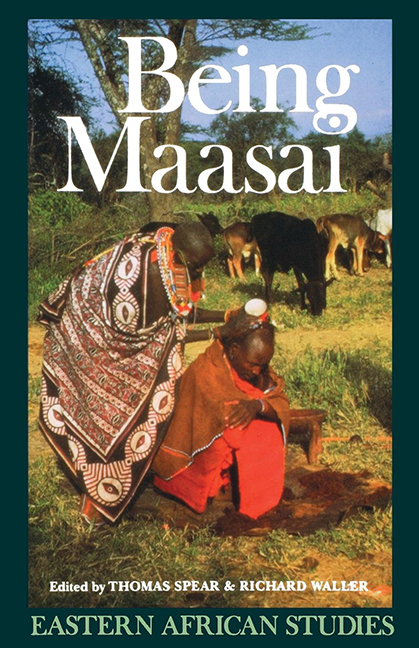Book contents
- Frontmatter
- Contents
- Maps, Figures & Illustrations
- Contributors
- Acknowledgements
- I Introduction
- II Becoming Maasai: Introduction
- 1 Dialects, Sectiolects, or Simply Lects? The Maa Language in Time Perspective
- 2 Becoming Maasailand
- 3 Maasai Expansion and the New East African Pastoralism
- 4 Aspects of ‘Becoming Turkana’: Interactions and Assimilation Between Maa- and Ateker-Speakers
- 5 Defeat and Dispersal: The Laikipiak and their Neighbours at the End of the Nineteenth Century
- 6 Being ‘Maasai’, but not ‘People of Cattle’: Arusha Agricultural Maasai in the Nineteenth Century
- III Being Maasai: Introduction
- IV Contestations and Redefinitions: Introduction
- V Conclusions
- Bibliography
- Index
2 - Becoming Maasailand
from II - Becoming Maasai: Introduction
Published online by Cambridge University Press: 30 August 2017
- Frontmatter
- Contents
- Maps, Figures & Illustrations
- Contributors
- Acknowledgements
- I Introduction
- II Becoming Maasai: Introduction
- 1 Dialects, Sectiolects, or Simply Lects? The Maa Language in Time Perspective
- 2 Becoming Maasailand
- 3 Maasai Expansion and the New East African Pastoralism
- 4 Aspects of ‘Becoming Turkana’: Interactions and Assimilation Between Maa- and Ateker-Speakers
- 5 Defeat and Dispersal: The Laikipiak and their Neighbours at the End of the Nineteenth Century
- 6 Being ‘Maasai’, but not ‘People of Cattle’: Arusha Agricultural Maasai in the Nineteenth Century
- III Being Maasai: Introduction
- IV Contestations and Redefinitions: Introduction
- V Conclusions
- Bibliography
- Index
Summary
Historians have not always appreciated the vital contributions which archaeology and linguistics have made to the study of East Africa before the nineteenth century. The history of Maasailand could not indeed be written without data provided by field archaeology, since usable oral traditions relating to the period before 1800 hardly exist. This chapter explores the history of the Rift Valley and the adjacent highland areas during the second millenium AD. It concentrates on the pre-Maasai pastoral tradition, especially that developed by the Sirikwa, who were essentially the ancestors of the modern Kalenjin groups of the Western Highlands of Kenya, and on the growth and influence of agricultural and hunting communities, including irrigation agriculture, within and to the east and west of Maasailand. It suggests an interpretation of the expansion of the Maasai as, essentially, the development of a ‘Maasai’ identity across the high grasslands in recent centuries — in effect, the ‘Maasaiization’ of Maasailand.
Comparative linguistic evidence suggests an early Maasai expansion from the region near the south end of Lake Turkana, close to that occupied by the Maa-speaking Samburu in the nineteenth century (Sommer and Vossen in this volume). This is indicated by linguistic geography, by two persuasive observations in particular. First, since the Maa tongue belongs to the Plains (Eastern) division of Nilotic, and all other branches of that division lie in north-western Kenya and adjacent parts of Uganda and Sudan, the separation of the ‘Maasaian’ branch must have occurred somewhere in or close to the south-eastern edge of that broad zone. That could have happened up to a millennium ago. Second, there is apparently more basic variety between the Maa dialects north of the Equator than between those to its south, indicating that the southward expansion is relatively recent. A fairly short span of time — perhaps two to four centuries — is also suggested for these movements by the sheer expanse of territory occupied by speakers of a single language whose dialects are mutually intelligible. This rather shallow time-span is enough to satisfy other attempts to construct a chronology for the central Maasai sections in particular, by calculating from the succession of their named age-sets or from the genealogy of their ritual leaders (loibons).
- Type
- Chapter
- Information
- Being MaasaiEthnicity and Identity in East Africa, pp. 38 - 60Publisher: Boydell & BrewerPrint publication year: 1993

